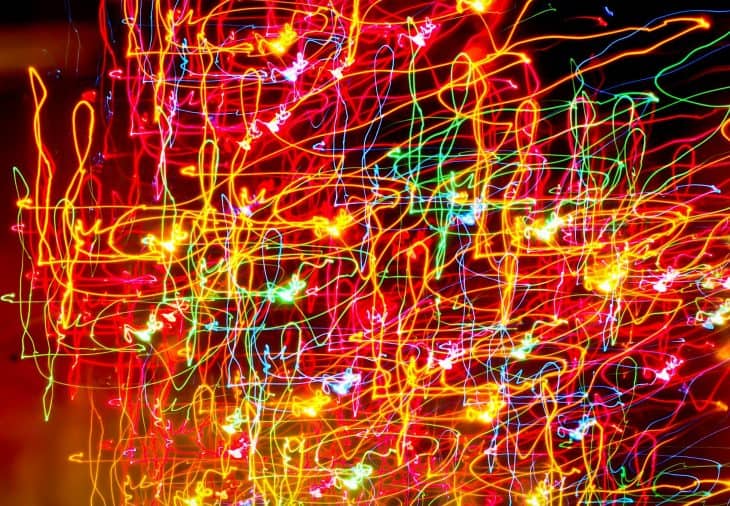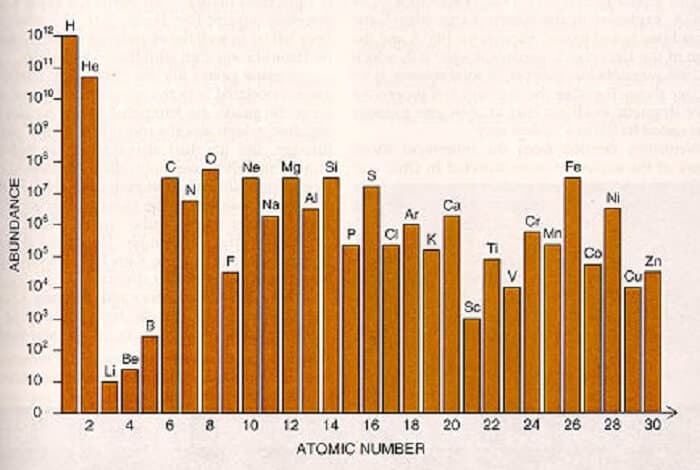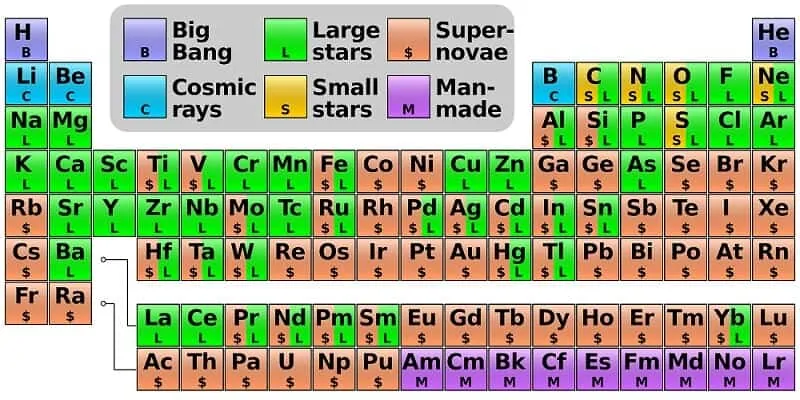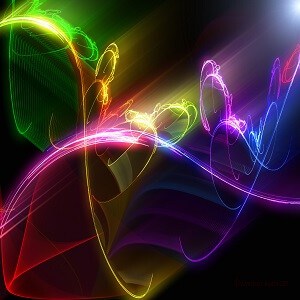
- Classification: Chemical element
- Name: Neon is based on the Greek word neos, which means new or new one
- Symbol: Ne
- Atomic Number: 10
- Group: 8 (noble gases)
- Color: None
- Odor: None
- Density: Two-thirds that of air
- Melting Point: -433.46 °F (-258.59 °C)
- Boiling Point: -410.94 °F (-246.08 °C)
- Discovery: Neon Gas Was Discovered in 1898
- Prevalence: Neon Gas Is Considered Both Abundant and Rare
- Astronomy: You Can Find Neon in the Stars
- Inventions: Neon Lighting Was Invented as Early as 1902
- Color: True Neon Signs Are Only Reddish-Orange in Color
- Uses: Neon Is Used in Television Sets and Lasers
- There Are 10 Liters of Neon Gas in Every Home
- Neon Light Can Pass through Fog
- Neon Is Expensive Compared to Other Elements
- Neon Can Cause Frostbite and Even Suffocation
- Neon Is Used to Freeze Corpses
Neon Facts Infographics

Neon Gas Was Discovered in 1898
Neon gas was discovered in 1898 at University College London by two British scientists: Sir William Ramsay and Morris W. Travers. They knew there must be an element on the periodic table between helium and argon, so they conducted research about liquid air. They cooled air until it became a liquid, then warmed the liquid and collected the gases that boiled off. They then discovered not one, but three new gases: krypton, neon, and xenon. These three gases are left over when nitrogen, oxygen, argon, and carbon dioxide are removed from air. They probably had no idea just how important neon would become!
Neon Gas Is Considered Both Abundant and Rare

Some neon facts appear to be contradictory, such as the fact that it can be considered to be both abundant and rare. After hydrogen, helium, oxygen, and carbon, neon is the fifth most plentiful chemical element in the universe. In this way, neon can be considered to be abundant. However, neon is a scarce gas in the Earth’s atmosphere. In fact, it makes up a mere 0.0018% of our atmosphere. Thus, somewhat confusingly, neon can also be considered a rare gas.
You Can Find Neon in the Stars

Neon, in the form of stable isotope forms, is produced within stars. For this to happen, the star in question has to have a mass that is equivalent to at least eight times that of the Earth’s sun. Neon is created during the alpha process of stars, which is when helium and oxygen are fused together. However, in the absence of an electrical current, neon remains colorless. So don’t expect to look into the night sky and see bright neon signs shining down at you!
Neon Lighting Was Invented as Early as 1902
One of the most surprising neon facts is that Georges Claude, a French engineer, invented neon lighting as early as 1902. He owned an air liquefaction company, which is where the fun began. He took leftover neon to create the first neon light tubes. He did this by passing an electric current through neon gas in a sealed tube, thus causing it to have a bright reddish-orange light. He unveiled the first neon sign in 1910 at the Paris Motor Show. Although he first intended this to be another form of interior lighting, and tried to sell it as such from 1910, people were not happy with the reddish-orange color of the light inside their homes. Claude’s company struck gold when they started selling the neon discharge tubes as advertising signs from 1912 onwards. This proved to be very successful, and neon advertising signage was introduced to the US in 1923 when a Los Angeles Packard dealership erected two large neon signs. It’s difficult to imagine many of today’s famous landmarks and tourist attractions, like Times Square in New York, without their abundant bright neon lights!
True Neon Signs Are Only Reddish-Orange in Color

One of the lesser known neon facts is that many of the signs that we regard as neon signs are not true neon signs at all. This is because neon is only responsible for the bright reddish-orange signs that are so common. Signs in any other colors are not true neon signs. These other colors are made by noble gases other than neon, or they are a form of colored fluorescent lighting. Either way, these signs aren’t really neon signs at all. But nobody said they aren’t just as pretty…
Neon Is Used in Television Sets and Lasers
Thanks to its unique properties, neon has many uses in our everyday lives. In fact, neon is used in advertising signs, vacuum tubes, wave meter tubes, lightning arrestors, high-voltage indicators, television tubes, plasma tubes and helium-neon lasers. In addition, liquid neon, which is now commercially available, is used as a cryogenic refrigerant. So, neon is not just for the streets of Las Vegas – it’s in your home too!
There Are 10 Liters of Neon Gas in Every Home
Here’s another one of the neon facts relating to your home: if you took a typical new home in the US and gathered together all the neon that existed in all the different rooms, you would obtain approximately 10 liters (2 gallons) of neon gas. This fact might make you see your home in a whole new light!
Neon Light Can Pass through Fog
One of the more unusual neon facts is that neon light can pass through fog. Although other lights are affected by fog, neon light simply cannot be obscured by it. Of all neon’s properties, this attribute is the most useful for airports. Neon is used extensively by aircraft and in cold areas for this reason. So, if you see a bright reddish light penetrating fog, you’ll know for certain that it’s a neon light.
Neon Is Expensive Compared to Other Elements
One of the more intriguing neon facts is that neon is quite expensive when compared to other elements. This is largely due to the fact that neon is quite rare and has to be recovered from the air, which increases the cost of both neon gas and liquid neon. In fact, neon is more than 55 times more expensive than liquid helium. This hefty price tag doesn’t stop it being widely used in our modern world, however.
Neon Can Cause Frostbite and Even Suffocation
There are certain neon facts that should serve as cautionary warnings. One of these facts is that neon can cause frostbite. This occurs when neon comes into contact with your eyes or skin within a contained area. More significantly, neon is an asphyxiant gas. This means that if you inhale an excessive amount of neon gas, it will deplete the level of oxygen in your body, leading to suffocation and even possibly death. Perhaps it’s best to leave neon to the scientists after all!
Neon Is Used to Freeze Corpses
According to the Royal Society of Chemistry, the refrigeration capacity of neon is three times that of liquid hydrogen, and 40 times that of liquid helium. This property makes neon a very important refrigerant in cryogenics, which is when things are frozen at extremely low temperatures. In addition, one of the most fascinating neon facts is that neon is also used for cryonics. Cryonics refers to the freezing of corpses so that they are preserved, in the hope these people will be revived by future medical technologies and able to live again. Neon brings a whole new meaning to the phrase the walking dead.
Neon Facts – Facts about Neon Summary
 Neon gas was discovered in 1898. Although it is expensive due to its scarcity in the atmosphere, the properties of neon make it highly desirable for many uses beyond just advertising signs. It is potentially harmful to humans, although it is used to preserve people who’ve passed away who would like to be revived when medical technology makes this possible.
Neon gas was discovered in 1898. Although it is expensive due to its scarcity in the atmosphere, the properties of neon make it highly desirable for many uses beyond just advertising signs. It is potentially harmful to humans, although it is used to preserve people who’ve passed away who would like to be revived when medical technology makes this possible.
Was this page helpful?
Our commitment to delivering trustworthy and engaging content is at the heart of what we do. Each fact on our site is contributed by real users like you, bringing a wealth of diverse insights and information. To ensure the highest standards of accuracy and reliability, our dedicated editors meticulously review each submission. This process guarantees that the facts we share are not only fascinating but also credible. Trust in our commitment to quality and authenticity as you explore and learn with us.
